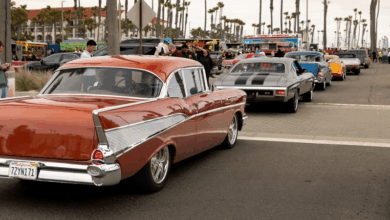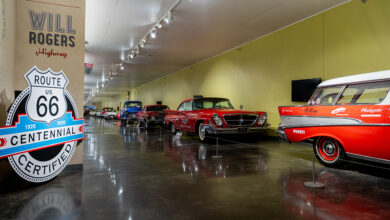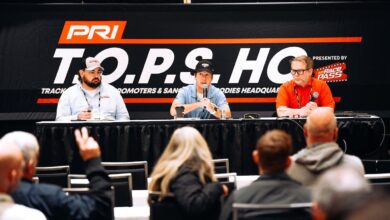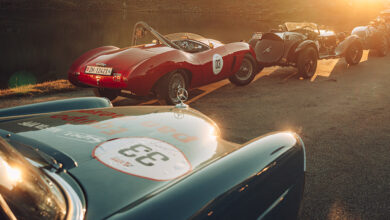From the Mag: SEMA Show Beginnings

The sport of drag racing and a handful of speed equipment parts manufacturers combined to give birth to the SEMA organization back in May 1963. SEMA, at the time, stood for Speed Equipment Manufacturers Assocation.
Some say the history of SEMA hasn’t always been accurately explained in detail, and some of the tales of how it all got started haven’t been totally factual. In the November issue of THE SHOP Magazine, contributor James Maxwell shares the story as it was told in the 1970s by then SEMA communications director, Donna Imrie.
“Credit for getting the industry’s manufacturers together must be given to an outsider, so to speak—a gentleman by the name of Henry Blankfort, who was then employed by Revell Inc., a manufacturer of (among other things) model race car kits,” she wrote in one of her informative bulletins.
In a bid to get manufacturers’ permission to produce their decals for inclusion in model kits, Blankfort and Lew Glaser discovered the industry didn’t have a governing association, later setting up a meeting that included Dean Moon, Willie Garner, Vic Edelbrock, Ed Iskenderian and more. Revell offered up its Model Association of America bylaws as a guide to establishing SEMA bylaws.
The president of Grant Piston Rings, John Bartlett, who was also an attorney, drew up the first SEMA bylaws, and the very first organized meeting of SEMA members took place at the Revell headquarters.
Friendly Competition
SEMA’s original founding fathers were apprehensive, according to Imrie, but the organization provided a united front against looming fears of the government outlawing the speed equipment industry. Iskendarian of Isky Cams was SEMA’s first president, followed in 1966 by Moon and the Els Lohn of Eelco Mfg.
A Show is Born
Lohn approached Robert E. Petersen of Petersen Publishing Co. in 1966 to discuss producing a SEMA trade show. That first event took place at Dodger Stadium (under the official SEMA banner) Jan. 10-12, 1987, with 98 display booths and approximately 3,000 attendees.
In addition to the parts and equipment displayed, as well as the numerous cars that were brought on the show floor to support the various manufacturers, there was a preview and first showing of the Dodge Thunder Charger set to appear in the upcoming auto racing motion picture Thunder Alley, which was released in March 1967.
Good Business & Good Times
In 1968, the show moved to the Anaheim Convention Center, and because the vast majority of exhibitors at the SEMA Shows of this era were based in southern California was cheaper and easier to set up and staff their booth each day of the event. Reports also show that the parties at the Anaheim shows were serious affairs.
It Happens in Vegas
With sell-outs in 1975 and again in 1976, it became apparent that the show was outgrowing its Anaheim location, and Leo Kagan, who served as SEMA president from 1975-’79, convinced the board to move the show to Las Vegas. The move proved successful, with the 1977 SEMA Show having 802 booths, as compared to the 591 booths at the last Anaheim show.
A Growing Industry
A review of the exhibitor list of the 1978 show reveals how much it had grown and expanded. The then 12-year-old trade association now included exhibitors that manufactured specialty products and components for street, off-road and marine applications.
In 1979, Nile Cornelison of National Custom Warehouse Inc. in Creston, Iowa was SEMA’s innovations day chairman, and his vision was to become involved with Detroit automakers. Lee Iacocca was the first keynote speaker for 1980, bringing Chrysler into play as part of the SEMA scene. The following year, a new concept for SEMA was Cornelison’s idea of a show within a show section, setting the stage for the New Product Showcase, which remains one of the show’s biggest draws to this day.
Click here to read the full story in the November issue’s digital version.
Stay tuned for Part II, which will explore the SEMA Show from the 1980s and beyond.



